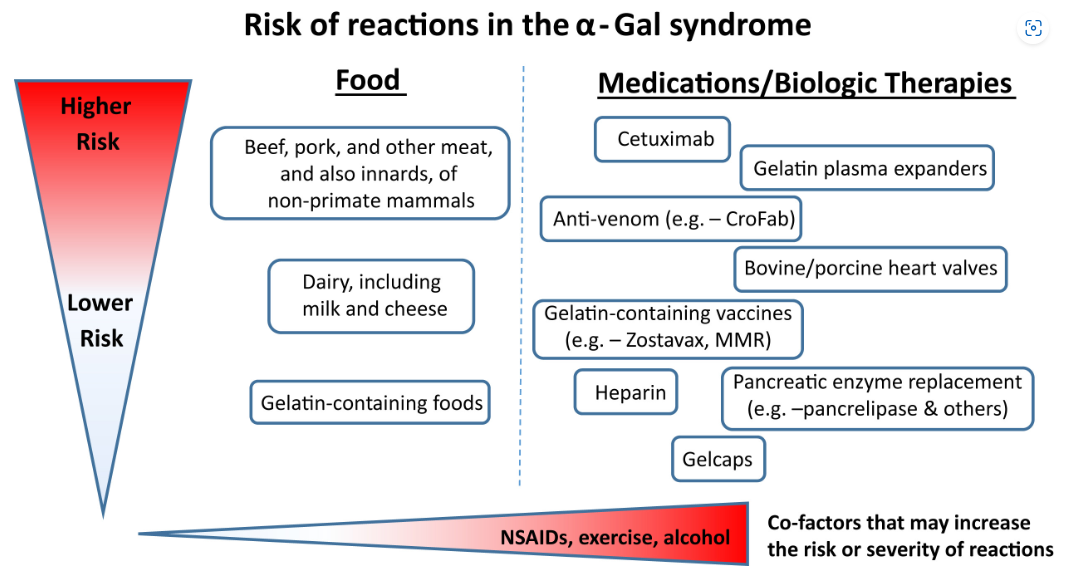Alpha-Gal (galactose-α-1,3-galactose)Allergy
Alpha-Gal Syndrome is just plain weird. Also known as "red meat allergy," "mammalian food allergy," or "tick-bite allergy," the syndrome is when an allergic reaction to Alpha-Gal, which is a carbohydrate (sugar) molecule found in mammal (animals that nurse their young) derived foods such as beef, pork, venison, animal dairy, bones (gelatin, collagen), and more (casings etc.).
This reaction actually begins with a bite from a tick or chigger. This can then trigger an allergic reaction with ingestion of any mammalian product, but it does not have to happen with every ingestion, and therefore can be inconsistent. The reaction can range from mild to severe and even life-threatening symptoms. Rather than happening soon after eating, Alpha-Gal allergy symptoms typically occur in a delayed fashion, even six hours after eating red meat or other mammalian products. This will frequently be in the middle of the night!
Alpha-Gal symptoms, among others, include:
Rashes, hives and swelling
Stomach pain, bad reflux, diarrhea, nausea and vomiting
Wheezing or shortness of breath
Migraines
Anaphylaxis
Reactions to alpha-gal vary enormously from individual to individual. There is no test to determine which category these individuals will belong to (see below for link to very helpful video):
Some people only have to stop eating mammalian meat and organs.
Other people need to avoid additional foods, like dairy and gelatin, as well.
Very few cannot tolerate personal care, household, and other products containing only micrograms of alpha-gal.
Some people react to fumes of alpha-gal, such as those produced by cooking meat.
Magnesium stearate and refined sugar are very rarely a problem.
Diagnosis is made by serum IgE test to alpha gal. Once diagnosis is made, no further diagnostic testing is needed. Again, there is no test to determine the level of sensitivity to Alpha Gal.
Allergist visit is typically not necessary.
Soliman Auricular Allergy Treatment (SAAT): There are no case controlled studies to prove effectiveness of this therapy. Case-control studies are important to provide important real-world evidence of effectiveness. Alpha Gal typically improves over time without any intervention.
Additional bites can increase a person’s sensitivity to Alpha-Gal. Thankfully symptoms disappear over time if sensitized individuals don’t receive additional bites (there is no other “cure” or treatment), and avoid the triggering foods. There is no telling how long it will take, it might be a year or many years. However, lower levels typically resolve faster than higher ones.
Do not forget to ensure adequate protein, B12, iron and calcium intake while Alpha-Gal free!
Your primary care doctor can recheck blood work yearly and prescribe an epinephrine autoinjector. You do need an epinephrine autoinjector even if you never had anaphylaxis as this is a true food allergy!
Links:
https://youtu.be/Vr7QtvfdQlE (Dr Commins, where to start with alpha gal diet ***highly recommended to watch***)
Alpha-gal Syndrome Factsheet | Ticks | CDC
